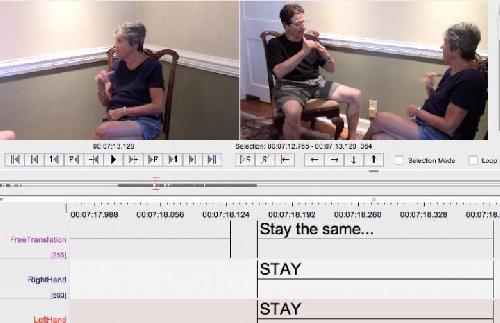It isn't obvious that sign language, gestures to replace hearing words, would have regional dialects - accents - but it is so, according to Jami Fisher, a lecturer in the University of Pennsylvania's Department of Linguistics, who is working on a project to document what they're calling the Philadelphia accent of this language.
What differentiates one region of American Sign Language from other such dialects? Why do those in the deaf community have an intuition that it's different? And how could scientists understand the regional variation?

"We don't know much about it beyond the lexical level, which is the equivalent of who says 'pop' and who says 'soda,'" says Meredith Tamminga, an assistant professor in Linguistics at Penn. "People get really excited about it but from a linguistic point of view, it's fairly superficial. People can learn new words and the words spread."
They focused on subtle and granular changes like how a vowel's use morphs over time and did video interviews with 12 in Philadelphia's deaf community, both young and old, then they had those interviews annotated, a painstaking process that takes up to two hours for every one minute of signing captured. The reason to go across ages is because in the time before the Individuals with Disabilities Education Act, the first iteration of which came in the 1970s, deaf education looked nothing like it does today. In many cases, children of hearing parents boarded at one of the deaf schools, sometimes starting as young as three, to learn from their peers.
This was the case in Pennsylvania from 1820 until 1984, at which point, "the numbers [at the nearest school for the deaf] were declining significantly because of IDEA," Fisher said. "That changed the landscape for deaf education significantly." From then on, many more deaf children went to mainstream schools, where they typically had fewer deaf peers and less exposure to signing; the signing they did see most likely came from an interpreter who was often not a native Philadelphia signer.
"You no longer had this setting with deaf adults in particular, deaf peers, exposing deaf children to the language, but also to these cultural traditions and norms," Fisher said.
Aspects of the language changed, and that's what Fisher and Tamminga hope to capture. Though their corpus could be a half-dozen years from completion, Fisher and Tamminga said they plan to publish new findings as they go.






Comments